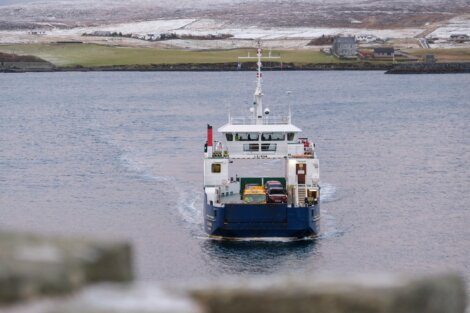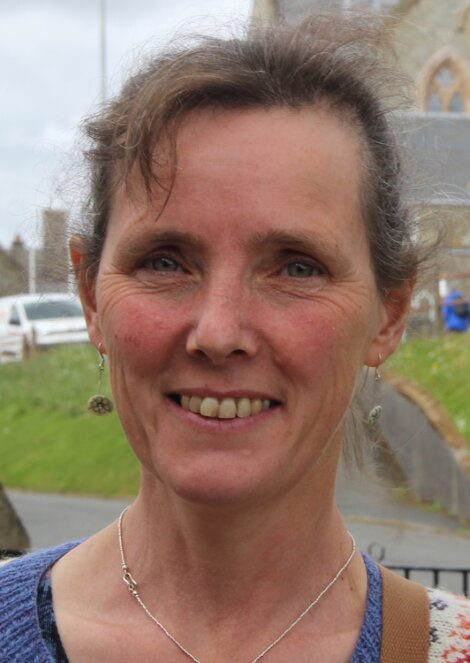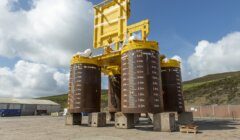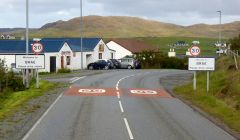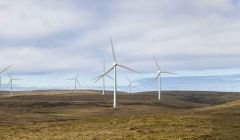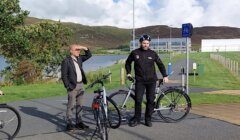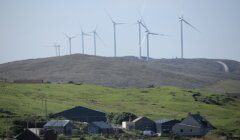Climate / Challenge of reaching net zero target spelled out to councillors
Two net zero route maps have been created to explore how Shetland could reduce emissions over the next 20 years
IT IS unlikely that Shetland will achieve net zero across all sectors by 2045 without an “overhaul” of the economy, land use and consumer habits, council officials have warned.
This is due to Shetland’s geography and the signifiant portion of emissions that are associated with sectors difficult to electrify, such as marine vessels, or those not directly linked to energy consumption like land use and agriculture.
Carbon capture and storage, where emissions from industrial processes are taken and stored, is viewed as one possible solution.
Earlier this year bids were invited for two carbon storage areas to the east of Shetland – already linked to Sullom Voe Terminal by pipeline – as part of the UK Government’s first licensing round in the sector.
Meanwhile the importance of restoring peatland, which can store carbon, has also been spelled out.
The information is contained in two new net zero route maps which have been given their first airing in front of Shetland councillors by the local authority’s climate change strategy team leader Claire Ferguson. One is for the council, and the other is for Shetland as an area.
There is recommendation for councillors to set an organisational net zero aim for the SIC of 2045, which is in line with the Scottish Government’s legally binding target.
Meanwhile elected members decided on Wednesday that Shetland Islands Council should sign the Scottish Government’s ‘Edinburgh Declaration’, which highlights concern about climate change’s impact on the loss of biodiversity, livelihood and wellbeing.
A report presented to members of the council’s environment and transport committee said that despite the challenge the local authority should “maintain high levels of ambition” while focusing on net zero measures that can definitely be adopted by 2045.
Become a member of Shetland News
The council is advised to also plan ahead to take advantage of new technologies that may become available in future years.
Shetland Islands Council was responsible for emissions totalling 65,875 tCO2e in 2019/20, with the fuel-powered inter-island ferries a key contributor.
For Shetland as a whole that rises to more than 900,000 tCO2e when taking into account facilities like Sullom Voe Terminal and Shetland Gas Plant and aviation and marine activity, including fishing boats.
It comes against a backdrop, though, of plans to turn Shetland into a “green energy island” – facilitated by the ORION framework – which could involve industrial hydrogen production.
The long-awaited net zero route maps, developed by consultants Riccardo, highlight that electrification of buildings could technically be reduced to net zero if fossil fuels are replaced with decarbonised grid power.
Shetland is due to be connected to the national grid in 2024 once the 103-turbine Viking Energy wind farm goes live.
It also notes that replacing inter-island ferries with fixed links, such as tunnels, would “eliminate the fuel requirement for the crossing it replaces”.
A report to councillors also highlights that the mitigation of climate change will have “very significant financial implications” for the council.
The net zero route maps have a wide-ranging list of recommendations, from replacing ferries, buses and planes with low carbon models to upgrading fossil fuel heating systems in houses and having more home working.
The energy recovery plant in Lerwick, which burns rubbish to heat the town’s district heating system, is also mentioned with regards to a possible carbon capture and storage trial.
The report on the net zero route maps will also go in front of the full council later this month, where final decisions will be made.
The SIC’s environment and transport committee recommend that the full council implement the suggested measures, which include working towards a net zero target as a key priority.
One of the decisions is to promote at a national level the scale of the challenge for Shetland as an area to reach net zero.
Committee chair Moraig Lyall said the drive to net zero will see “serious implications across the entirety of the council”.
She said the priority should be for actions that also benefit the community, such as insulating homes.
“As an island group we do have severe challenges,” Lyall added, saying it is important to stress the difficulties Shetland will have in reaching net zero on time.
Local Green councillor Alex Armitage, who spoke up for peatland restoration as the biggest opportunity to decarbonise, said the scope of the report was “absolutely immense”.
“We all have a huge amount of work to do to engage with people, to help people understand the enormity of change that’s going to be required in all of our lives.”
He added children and grandchildren in Shetland will be hugely impacted by climate change in addition to people across the world.
Meanwhile North Isles member Robert Thomson described himself as a “realist” on the anticipated carbon outcome and stressed the need to not only look after the environment but Shetland’s population too, through projects such as better insulation and cheaper renewable energy.
The route maps modelled three ‘pathways’ – a 2030 ambitious pathway, and pragmatic and ambitious 2040 pathways.
They recommend the ambitious 2040 pathway, which could achieve a predicted 92 per cent reduction in emissions from a 2019/20 baseline by 2045.
This pathway assumes that “significant resources and budget” are made available to minimise the council’s emissions by 2040. But there is a warning it may require high level transformation to services and operations.
It all comes while the United Nations COP27 climate conference is held in Egypt.
During discussion on signing the Edinburgh declaration, committee chair Moraig Lyall said she felt there was a lot of initiatives being held back by outdated legislation and policy.
She also said it should not be signed just for “virtue signalling”. Members were held that a review will now be carried out into the issues at play.
But Lyall suggested the irony would not be lost on many islanders that large portions of peatland are currently being dug up for the Viking Energy wind farm construction.
Meanwhile Armitage said he was worried crofters and farmers are not fully engaged on the topic, and expressed concern that they could be affected by a top-down “diktat” in the future.
“We all need to be brought on board with the huge changes are required, so I think engagement is an absolute priority,” he said.
Become a member of Shetland News
Shetland News is asking its many readers to consider paying for membership to get additional features and services: -
- Remove non-local ads;
- Bookmark posts to read later;
- Exclusive curated weekly newsletter;
- Hide membership messages;
- Comments open for discussion.
If you appreciate what we do and feel strongly about impartial local journalism, then please become a member of Shetland News by either making a single payment, or setting up a monthly, quarterly or yearly subscription.






